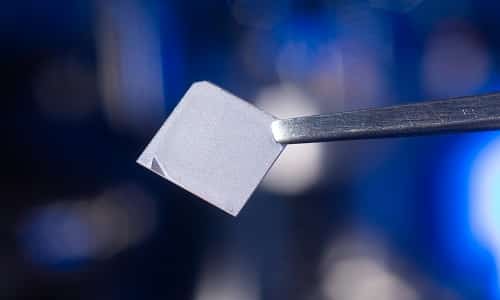These thin films come with the benefits of better light reception and electrical conductivity, besides being environment-friendly.

Traditionally, semiconductors made from silicon have been used for creating materials that conduct electricity. Now, scientists from the University of Buffalo, the U.S. have successfully created thin films made from barium zirconium sulfide (BaZrS3), which have good electronic and optical properties.
“For many decades, there have been only a handful of semiconductor materials that have been used, with silicon being the dominant material. Our thin films open the door to a new direction in semiconductor research. There’s a chance to explore the potential of a whole new class of materials,” said Hao Zeng, Professor of Physics, College of Arts and Sciences, University of Buffalo.
Excellent electrical conductivity
BaZrS3 belongs to a category of low-toxicity materials known as chalcogenide perovskites.
The films combine exceptionally strong light absorption and good charge transport – qualities which are highly required for the flow of electrons.
Interestingly, BaZrS3 has been present on earth for a long time and is not a new material.
“It has existed for more than half a century,” says Zeng. “Among earlier research, a company in Niagara Falls produced it in powder form.”
However, the researchers did not find the powdered form to be of much applicability. Therefore, they resorted to thin films instead.
Using heat from a laser source, the barium zirconium oxide was vapourised. This vapour was then deposited on a sapphire surface and later, through a chemical process called sulfurization, the final end-product in the form of a thin film was obtained.
“Semiconductor research has traditionally been highly focused on conventional materials,” said Haolei Hui, PhD Physics student, University of Buffalo. “This is an opportunity to explore something new. Chalcogenide perovskites share some similarities to the widely researched halide perovskites, but do not suffer from the toxicity and instability of the latter materials.”
Applications
The above two qualities of light absorption and good charge flow make these thin films ideal for photovoltaics and light-emitting diodes (LEDs).
“Now that we have a thin film made from BaZrS3, we can study its fundamental properties and how it might be used in LEDs, optical sensors and other applications,” said Xiucheng Wei, PhD Physics student, University of Buffalo.
Another application is in solar panels. It is suggested that BaZrS3 films can be much more efficient at converting sunlight into electricity than traditional silicon-based materials. And since it is quite expensive to manufacture perfectly flawless materials, the thin films instead can work well and help lower down solar energy costs – even if they contain certain imperfections.
The above article is based on the research paper titled “Realization of BaZrS3 chalcogenide perovskite thin film for optoelectronics” that was published in the journal Nano Energy.







i remember in the late 80s to early 90s a company named ARCO SOLAR had introduced thin film solar cells saying that they could be used as window tint …1 specific application was to put them in motor vehicles as tint to power the blower motor in reverse to help vent the hot air out of the car while ti was parked
Yes, you are right. But they were all based on silicon.